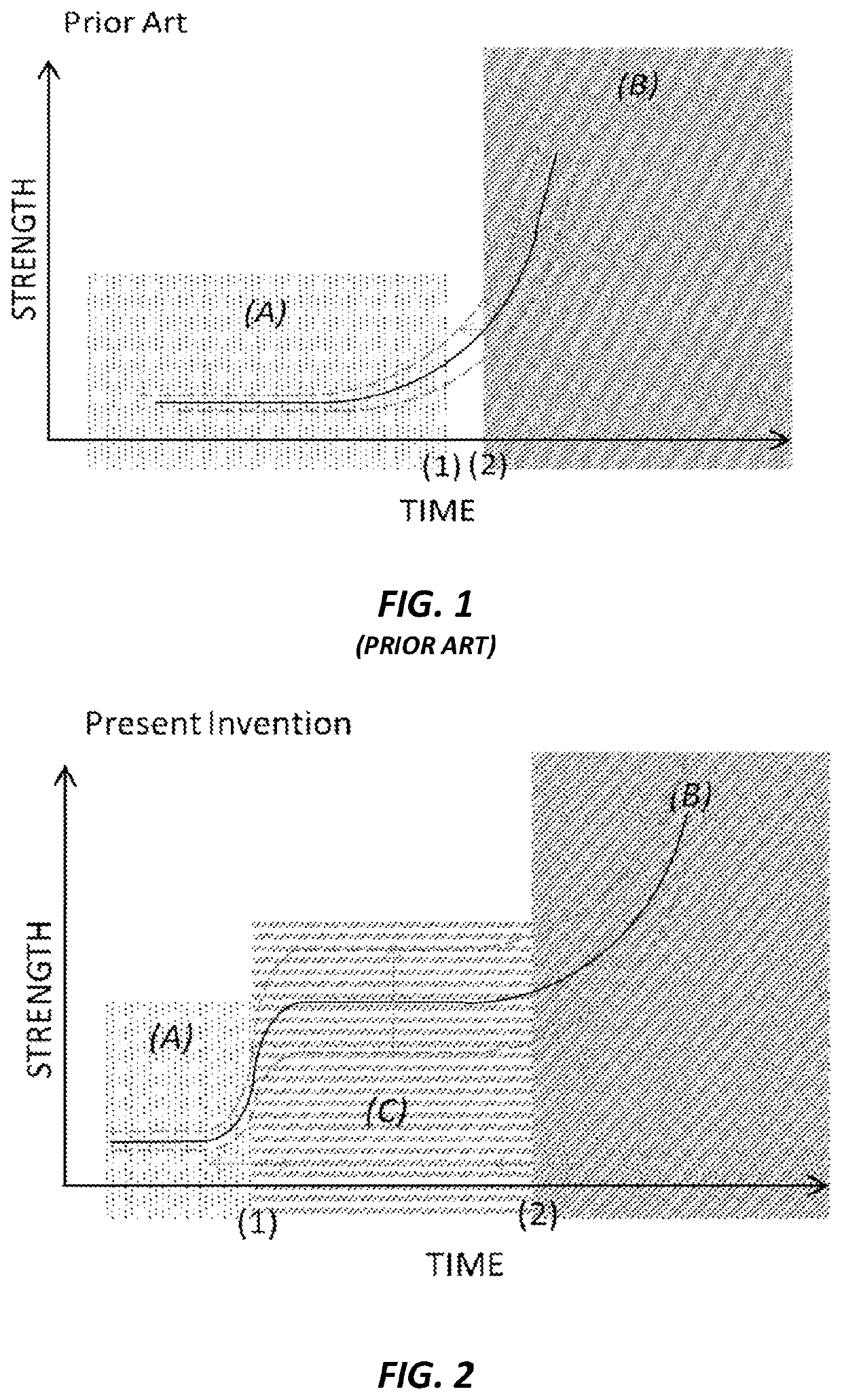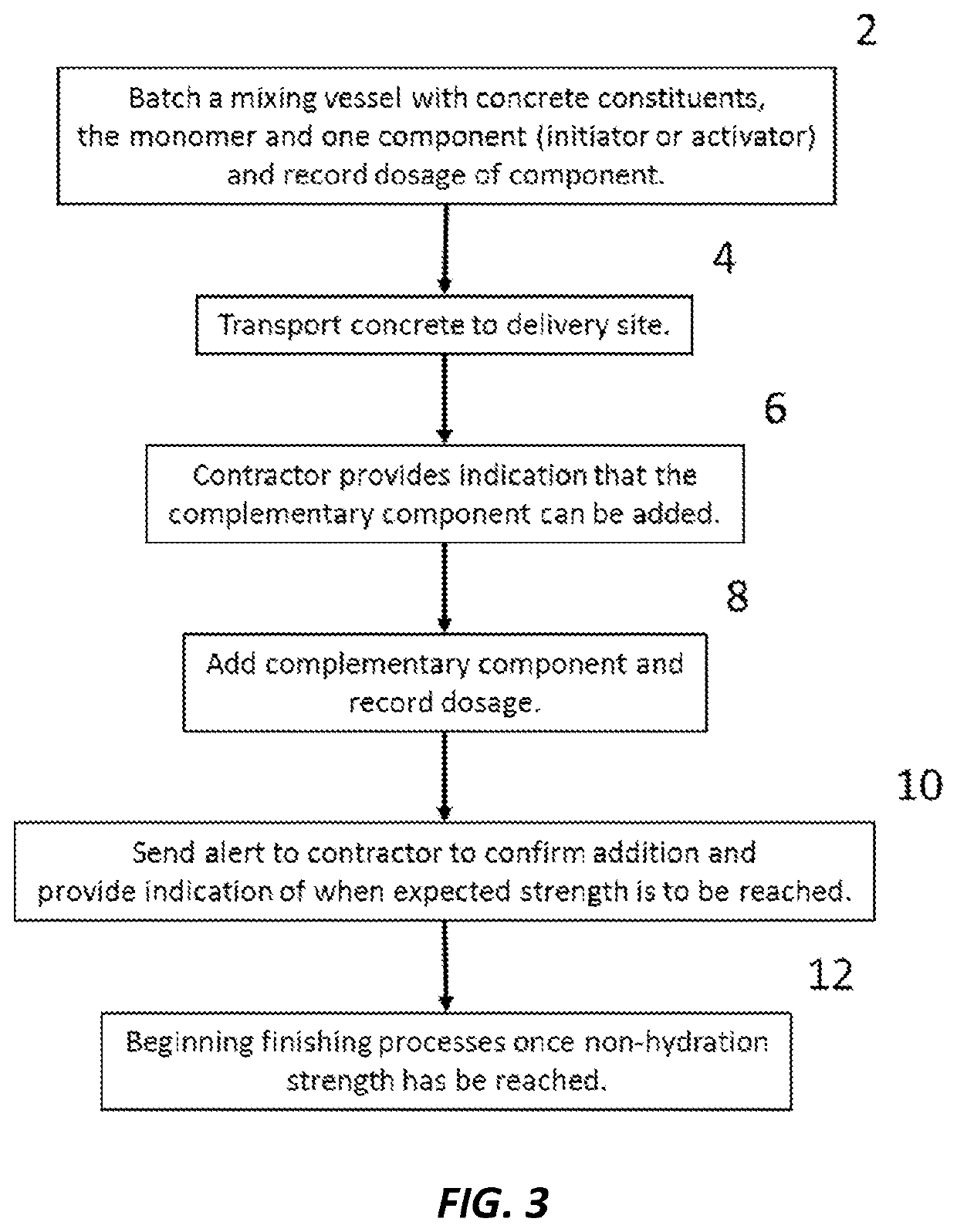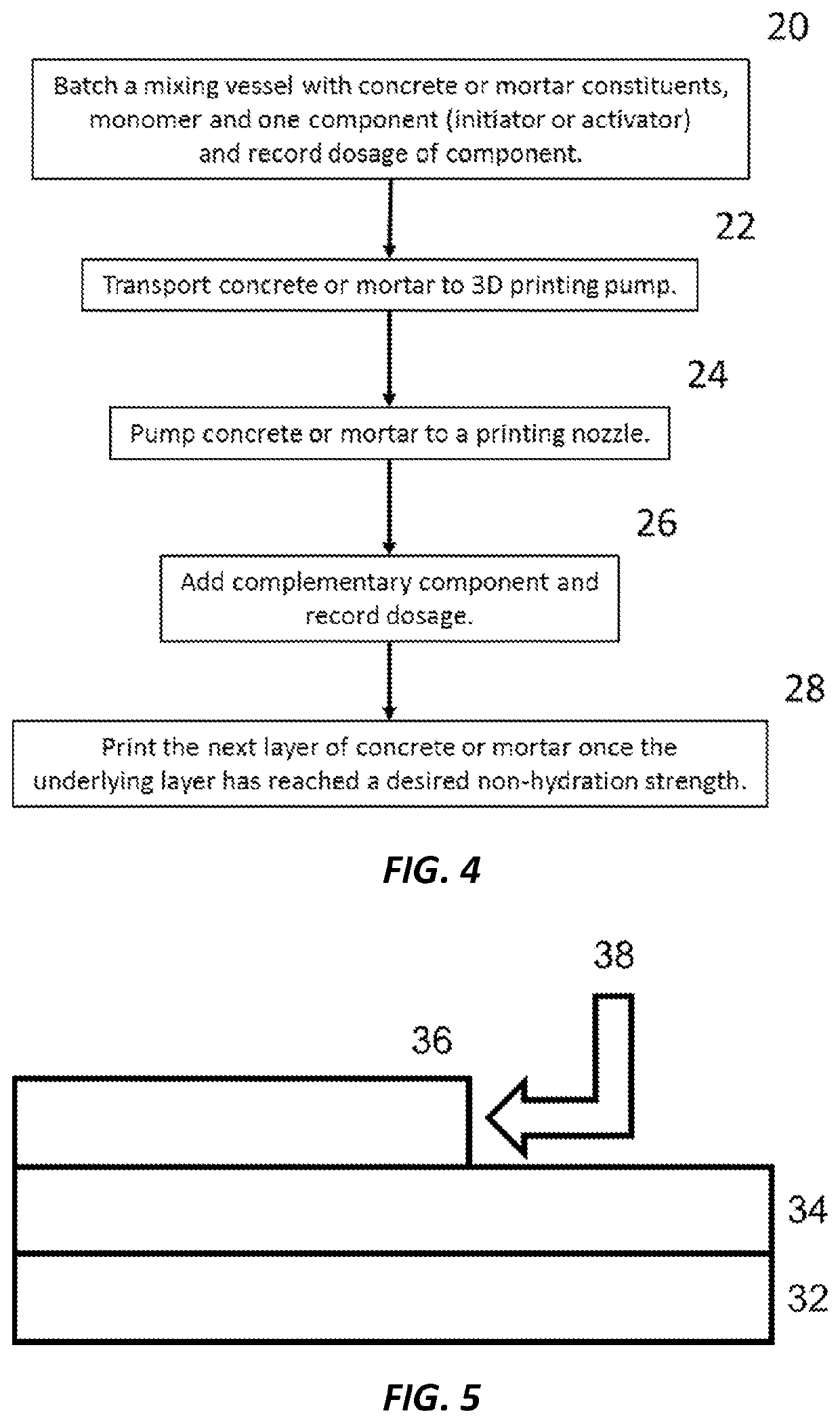Non-hydration strength in cementitious compositions
a non-hydration strength and composition technology, applied in the direction of liquid ingredients supply apparatus, chemistry apparatus and processes, liquid ingredients preparation apparatus, etc., can solve the problems of not being able to achieve high green strength or extended “finishing” and achieve significant window of finishing, improve the 1- and 7-day strengths
- Summary
- Abstract
- Description
- Claims
- Application Information
AI Technical Summary
Benefits of technology
Problems solved by technology
Method used
Image
Examples
example 1
[0163]Hydratable cement mortar samples were prepared using incremental amounts, e.g., 2%, 4%, and 6% solids based on weight of cement material (% s / cm), of 2-acrylamido-2-methylpropane sulfonic acid (“AMPS”) monomer and N,N′-methylene bis(acrylamide) (“bis-AAm”) cross-linker monomer in a weight ratio (AMPS / bis-AAm) of 90 / 10.
[0164]The cement mortar mix design included cement, water, and a sand (EN-196) in a weight ratio (sand / cement / water) of 1350 / 533 / 240 grams (w / cm=0.45), and also including a polycarboxylate dispersant polymer at 0.06% s / cm based on weight of cement.
[0165]The polymerization initiator system employed was a potassium persulfate (“KPS”) initiator (0.026% s / cm) with a sodium bisulfite activator (0.012% s / cm) to form the redox pair.
[0166]Mixing procedure was as follows: 1) sand, water, AMPS, bis-AAm, and KPS were added into a Hobart mixer bowl and mixed for 2 minutes; 2) cement was added to the bowl, and mixed for an additional 2 minutes; and 3) sodium bisulfite was the...
example 2
[0171]Cement mortar mixes using different monomers were prepared in a manner similar to that described above in Example 1.
[0172]In this example, two different exemplary compositions of the present invention were tested: AMPS and acrylic acid (AA); and AMPS and N,N′-dimethylacrylamide (DMA). The materials and mixing procedure were similar to that described above in Example 1, except the types, combinations, and relative amounts of the monomers are slightly varied: (1) AMPS:AA:bis-AAm=1.8:2.0:0.2% s / cm, (2) AMPS:DMA:bis-AAm=1.8:2.0:0.2% s / cm, and (3) AMPS:DMA:bis-AAm=0.9:0.1:3.0% s / cm.
[0173]The same KPS / sodium bisulfite redox pair was used for each of the three mixes.
[0174]In FIG. 7, the penetration test results show that the AMPS combination with polymerizable monomers such as AA or DMA results in equal or better plateau compressive strengths as the AMPS system of Example 1 with comparable dose.
example 3
[0175]A cement mortar mix using the same AMPS / bis-AAm system in Example 1 was tested again, this time with the addition of calcium nitrate at 1.42% s / cm. The same KPS / sodium bisulfite redox pair was also used. The mortar mix were prepared in the same manner as Example 1.
[0176]As shown in FIG. 8, the addition of calcium salt enhanced the plateau compressive strength compared to the respective mix in Example 1. It should be noted that the addition of calcium or other alkaline salts also increases the later age strength that originates from cement hydration.
PUM
| Property | Measurement | Unit |
|---|---|---|
| penetration pressure | aaaaa | aaaaa |
| penetration pressure | aaaaa | aaaaa |
| depth | aaaaa | aaaaa |
Abstract
Description
Claims
Application Information
 Login to View More
Login to View More - R&D
- Intellectual Property
- Life Sciences
- Materials
- Tech Scout
- Unparalleled Data Quality
- Higher Quality Content
- 60% Fewer Hallucinations
Browse by: Latest US Patents, China's latest patents, Technical Efficacy Thesaurus, Application Domain, Technology Topic, Popular Technical Reports.
© 2025 PatSnap. All rights reserved.Legal|Privacy policy|Modern Slavery Act Transparency Statement|Sitemap|About US| Contact US: help@patsnap.com



